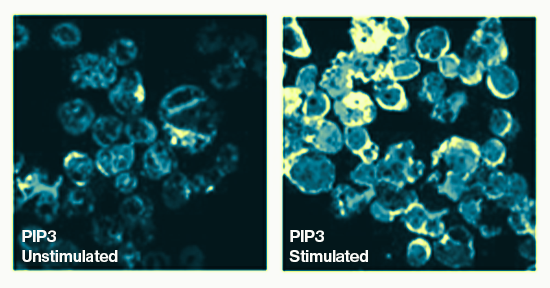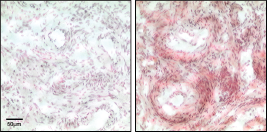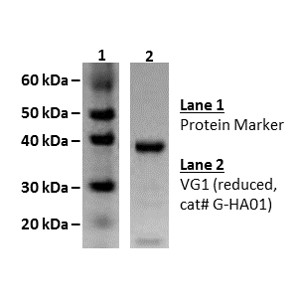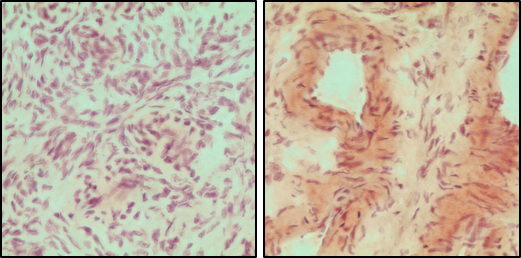Purified Anti-PtdIns(4,5)P2 monoclonal antibody conjugated with biotin.
Subclass: IgM
Source: Mouse
Clone: 2C11
Applications: ELISA, Immunofluorescence, Protein-Lipid Overlay (PIP Strip), Flow Cytometry
Phosphoinositides (PIPns) are minor components of cellular membranes but are integral signaling molecules for cellular communication. Phosphatidylinositol 4,5-bisphosphate (PIP2) has been shown to play a central role in a variety of cellular functions. Amongst its many functions, PIP2 is a substrate for Phospholipase C-coupled G-protein pathways involved in intracellular calcium release in a number of tissues. It is also a substrate for class I phosphoinositide 3-kinase (PI3-K) forming PIP3.
Selected Publications:
1) Hoek, K. L., P. Antony, et al. (2006). “Transitional B cell fate is associated with developmental stage-specific regulation of diacylglycerol and calcium signaling upon B cell receptor engagement.” J Immunol 177(8): 5405-13.
2) Antony, P., K. Hoek, et al. (2007). “Micro-scale flow cytometry-based and biochemical analysis of lipid signaling in primary B cell subpopulations.” Biol Proced Online 9: 73-83.
3) Marquez, M. G., C. Fernandez-Tome Mdel, et al. (2009). “Bradykinin induces formation of vesicle-like structures containing vinculin and PtdIns(4,5)P2 in renal papillary collecting duct cells.” Am J Physiol Renal Physiol 297(5): F1181-91.
Product keywords: PIP2, PI(4,5)P2, PtdIns(4,5)P2, IgM, anti-PIP2





